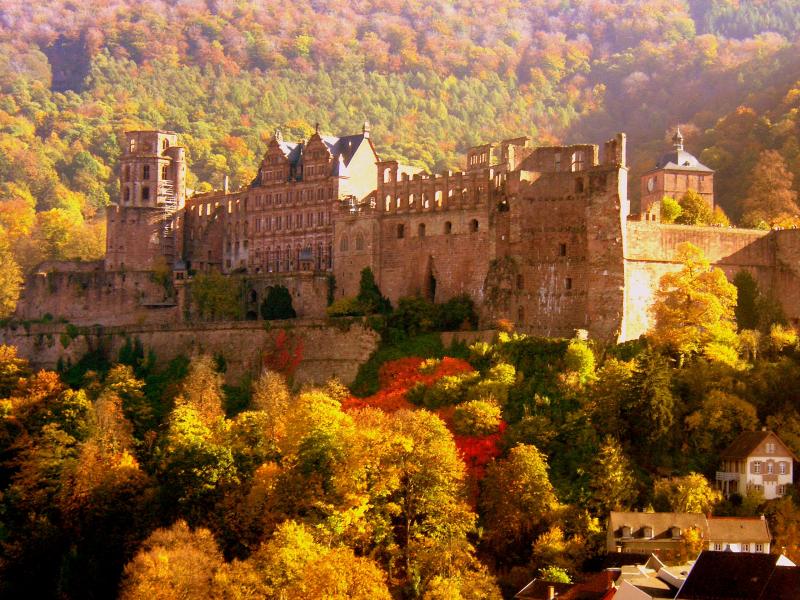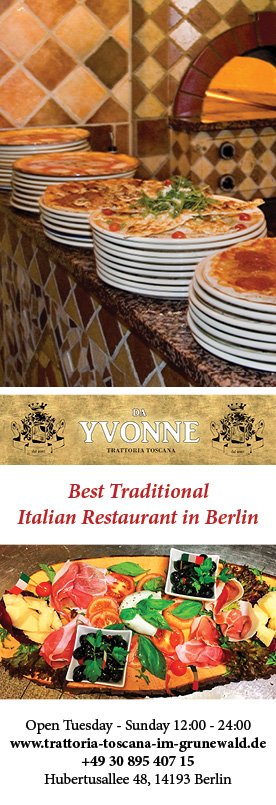
Historic Heidelberg
By Sean Mahon
Nestled on the banks of the River Neckar, Germany’s oldest and most famous university town is well renowned for its baroque Old Quarter, lively pubs, energetic student atmosphere and romantic castle that overlooks the quaint collection of buildings below. The town’s stunning setting and incredible architecture have made it an attractive destination for some of the world’s most respected artists, writers and philosophers, including Goethe, William Turner and Mark Twain. Heidelberg has deep roots in region; in the 5th Century BC, a Celtic fortress was built in the area, and in 40 AD the Romans built permanent camps and a signalling tower on the banks of the Neckar. The Schönau Abbey was built in 1142 and it is around this time that the town of Heidelberg was founded. The world-renowned university opened its doors in 1386, and nearly 250 years later the town was taken over by the Catholic League during the Thirty Years’ War. Luckily, Heidelberg remained almost completely untouched by the Second World War, allowing it to retain its narrow streets and Baroque charm. The terracotta-red rooftops and the long, winding cobbled streets of the Aldstadt make Heidelberg one of Germany’s most romantic and historically fascinating cities.
Philosophenweg
A famous trail running along the northern bank of the River Neckar, the ‘Philosopher’s Way’ has been frequented by numerous leading thinkers and intellectuals throughout history. Winding its way through steep vineyards and lush green orchards, the path offers great views of the Old Town and the castle on the opposite bank. With the stunning views across the river, the presence of exotic plants including Japanese cherries, cypresses, bamboo, gingko and lemon trees, it is easy to see why philosophers and writers including Hegel and Nietzsche came here in search of inspiration, and why many of the university’s professors still stroll along the path to this today. For those interested in the history of the town, the path runs close to the ruins of the Monastery of St. Michael, built in 1023 and abandoned in the 16th Century.
Heidelberg Castle
Situated 280 foot above the town, Heidelberg Castle has remained true to its Renaissance origins throughout a nearly 800 year existence. Built on the tree-lined northern part of the Königstuhl hillside, sections of the castle have twice been destroyed by lightning, and yet many of its Gothic structures remain standing to this day. A recent survey of 18,000 international guests conducted by the German National Tourist Board voted Heidelberg Castle number one out of the top 100 sights in Germany.
Boasting uninterrupted views across the picturesque narrow streets of the “old town”, Heidelberg Castle is a must-see for those wanting to fully appreciate the beauty of the city and its surrounding area. The River Neckar and the rolling hills on its opposite bank dominate the scenery visible from the castle, and the beautiful 18th Century bridge that spans the river is another integral part of the view.
The castle itself becomes the centre of the city’s celebrations three times a year when residents and visitors alike gather to commemorate the destruction of the castle by the French in 1693. Red light drenches the castle’s walls and a vast, vibrant firework display dominates the cityscape. During the summer months, the courtyard becomes the site of the Heidelberg Castle Festival, during which open air musicals, theatre performances and classical concerts are performed by the Heidelberg Philharmonic. Indeed, the castle’s rich history and cultural importance makes it a popular venue for weddings, and the chapel hosts around 100 ceremonies a year.
The Altstadt
Heidelberg’s long and narrow historic centre runs from Sofienstrasse to the famous castle, and encompasses many of the town’s most famous landmarks. The best place to start a tour of the old town is at Bismarckplatz, from where you can stroll down the pedestrianised Hauptstrasse, Heidelberg’s main shopping street. Here you can pick up a souvenir and a bite to eat before heading to Universitätsplatz, home to the old Baroque style university building. For an alternative panoramic view of the town, head to the Holy Ghost church in Marktplatz. The foundations of this late Gothic church were laid in 1398 and it took around 150 years to complete. Climb the steep, narrow steps to the top of the church tower, from where you can take in the stunning views of the dominating castle and the deep red patchwork of the Old Town’s rooftops. Marktplatz itself offers numerous fine-dining opportunities, and opposite the entrance to the church is the Haus zum Ritter, the oldest private house in Heidelberg, built in an intricate renaissance style.
The Alte Brücke
This beautiful stone bridge was constructed by Prince Elector Carl Theodor in the late 18th Century. The two tall white towers on the city side of the bridge were once part of the city wall and contain dungeons used for housing criminals. Between these towers and above the portcullis is a plaque acknowledging the Austrian troops who defended the bridge against a French attack in 1799. Nowadays the bridge acts as a perfect place from which to take pictures of the town’s skyline and the castle on the Königstuhl hillside opposite. One of the main attractions for visitors to the bridge is the statue of a monkey holding a mirror that sits next to the portcullis. Legend has it that this curious statue symbolises the fact that neither the city-dwellers nor the people who lived outside the city were better than the other, and that they should look over their shoulder as they cross the bridge to remember this.
Thingstätte
Built into the side of the Heiligenberg (Holy Mountain) and overlooking the town, this huge amphitheatre was built between 1934 and 1935 by the Nazis as an outdoor setting for gatherings and rallies. There were plans to build 1000 such arenas, but the movement failed to gain much popularity and only 45 were eventually finished, making Heidelberg’s Thingstätte an extremely rare and important historical location. The amphitheatre features the ruins of tiered stone seating, a long platform used for hosting speakers and two hexagonal towers built to hold flags, lighting and sound. The first ever rally held at the amphitheatre attracted 20,000 people, but after the Thingstätte fell out of favour it was transformed into a national park, which remains to this day. The hike up to the amphitheatre and the tracks in the surrounding hills provide the chance to explore Heidelberg’s stunning countryside, whilst the Holy Mountain itself is a fascinating location; it is littered with ancient burial grounds and was once the site of a Roman temple dedicated to the god Mercury.
Share this article:



















